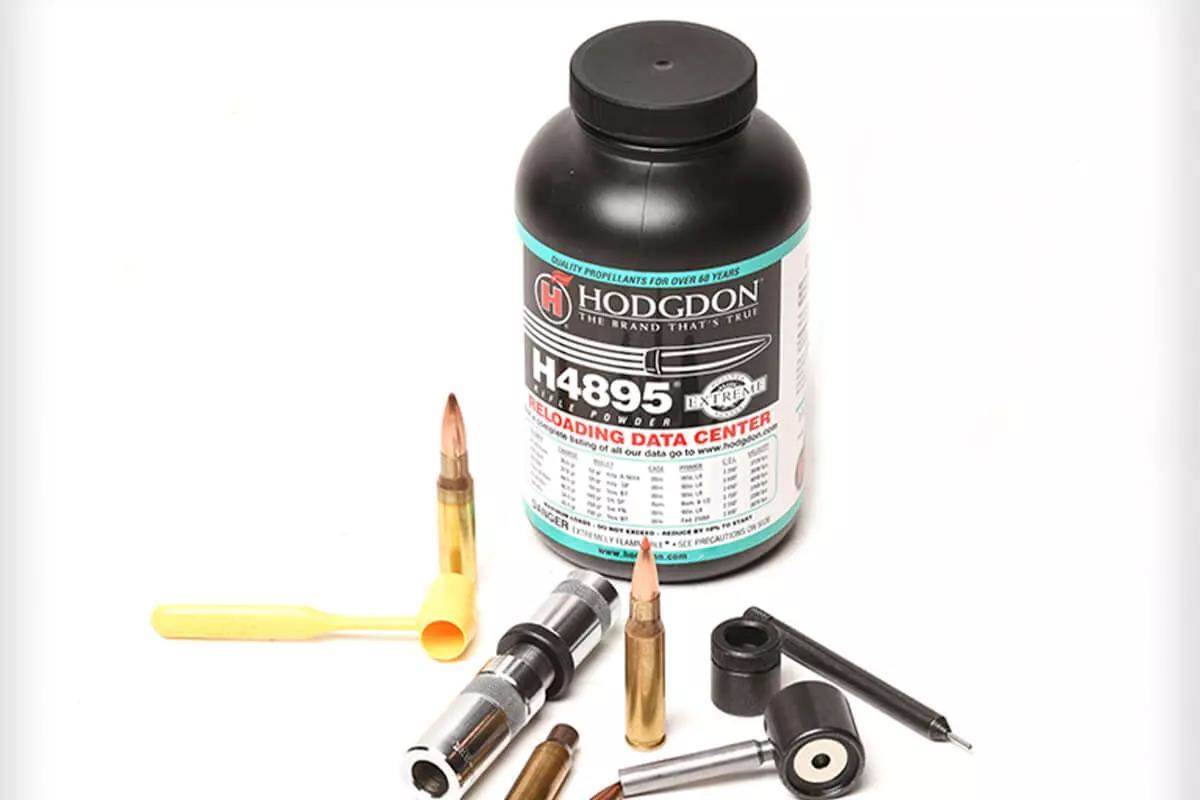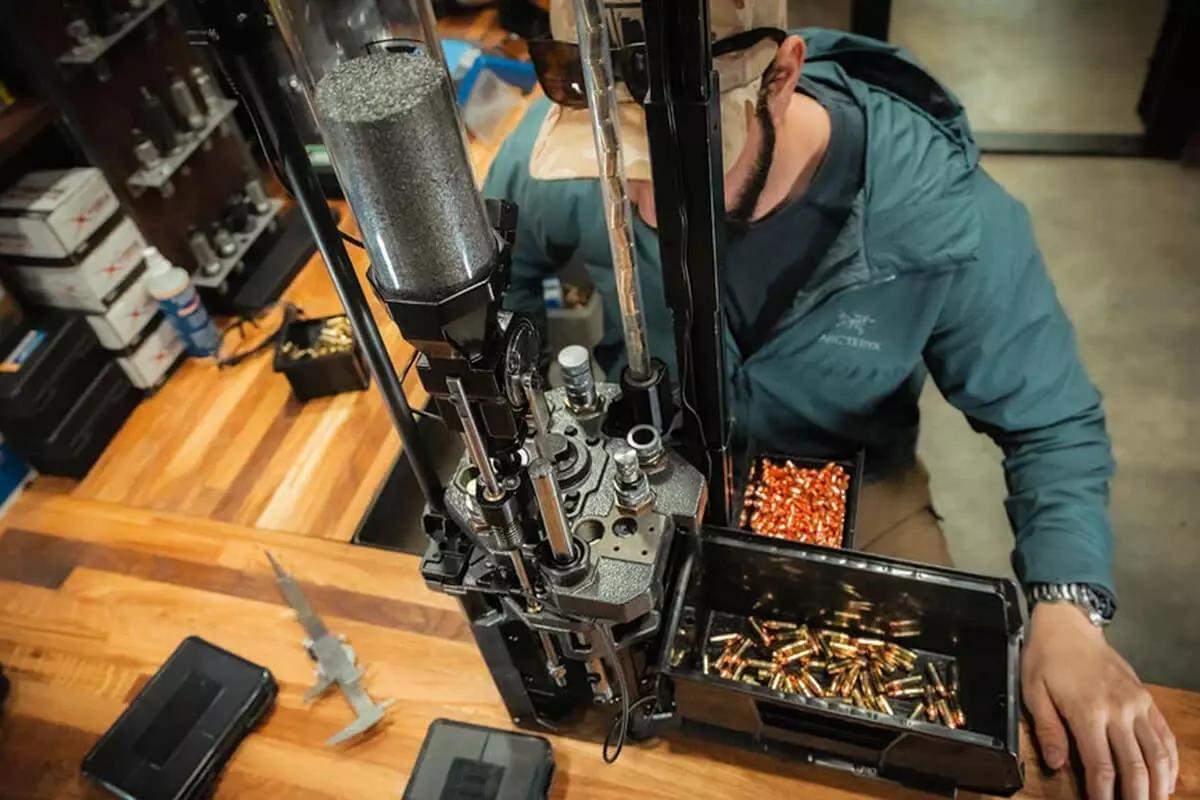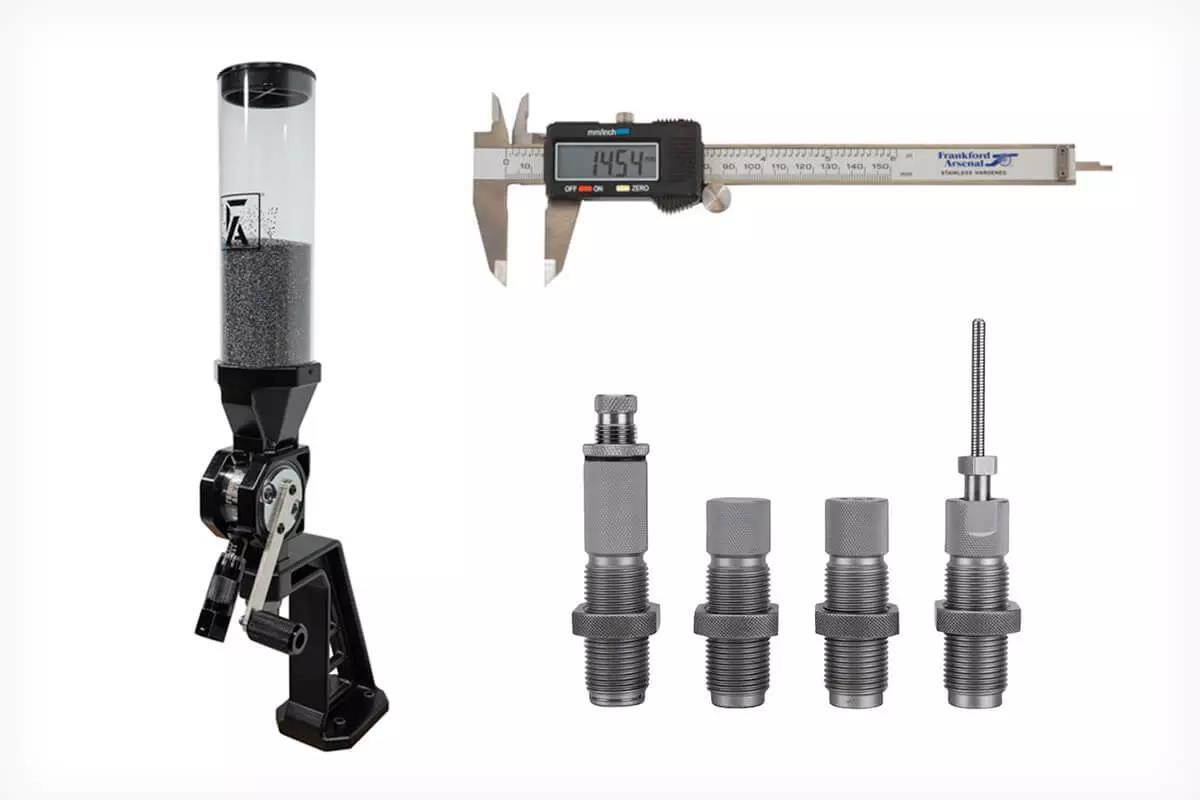Once you have the right components set up, reloaded is a fun and satisfying process.
November 04, 2023
More people are seeking out do-it-yourself (DIY) methods for everything nowadays, mostly stemming from inflation, political situations, or simply just wanting to be self-sufficient. We’re seeing that trend in the outdoor industry, too, especially in firearms. For instance, building an AR-style rifle is becoming far more common place than it was when I was growing up (I also grew up during the Clinton ban, so owning one in general, let alone outright building one was far more unheard-of). Another less common DIY practice in the firearms arena is the old-school hobby of reloading (also known as handloading), which is a skillset allowing shooters to build their own ammo from components at home.
Why Should You Reload?

Why would anyone want to start down that road? One might argue that major manufacturers already load quality ammunition for whatever firearm someone might own. While that may be true, handloading ammo is beneficial for a few reasons. One, it lets shooters load combinations not sold in stores. For instance, a go-to load of mine for hunting is a 200-grain, .308-caliber LRX bullet from Barnes loaded into my .300 WSM over 62 grains of H4350, with the bullet seated to magazine length. I wanted to shoot that bullet in my rifle, but no one loaded it (probably because it was assumed it was too long a bullet, thereby eating away case capacity). My results? I get a sub-inch group at 250 yards regularly with this bullet, and it’s still trucking along at 2,900 feet per second (fps). Another reason to reload ammo is to save money (though that sometimes isn’t the case when prices soar due to demand). My .458 SOCOM is much cheaper to load than buying factory ammo – assuming I can find it. That brings up the third reason to reload: obscure cartridges.
There are some old-school wonders out there, as well as some purely niche cartridges that have a cult following. But good luck finding ammo produced at a commercial level. Handloading provides opportunities to get into cartridges that have either gone extinct or just don’t get prioritized all that often from factories. Even worse, some cartridges I load for, such as my 6X45, never even saw the light of day on the commercial market. It’s a wild cat, meaning it’s a handload-only proposition because literally no one makes a commercially available gun chambered for the round unless one decides to with a custom build. Obviously, ammo manufacturers aren’t going to load ammo for which no guns exist, because there’s no market for it.
Advertisement
Handloading also allows for accuracy and velocity improvements. It’s a way to get the best ballistics possible. Not saying there’s anything wrong with factory ammo in most cases, but if shooters just can’t find a load that a particular gun likes, sometimes a tad more velocity, a different powder, length of bullet for the twist rate, or another change can make all the difference. Handloading allows shooters to tinker. At times, I’ve had specific goals in mind, like shooting a .22-250 Remington as fast as I can, just because that cartridge was built for pure speed. Other times, I wanted to find a subsonic load combination to run through a suppressor to make a gun as quiet as possible. Finally, it allows shooters to, well, shoot, when factory ammo is hard to come by during ammo scares. Regardless of the reasoning, handloading provides the method by which shooters can get deep into the madness of ballistics. It’s a long, dark rabbit hole reloaders find themselves in, but in the shooting sports, it’s one of the most enjoyable hobbies around. Some, like myself, would even consider it therapeutic in a sense, because it allows for a relaxed sense of focus; not to say complacency is acceptable, but there’s no pressure or severe strain when reloading. Rather, reloading is simply something which takes intentional attention.
Reloading Components

So, what’s needed to reload ammo? Well, it depends on what a shooter is trying to do. Is the objective to get match-grade accuracy because one is participating in an F-Class or PRS competition or event? Is someone hunting and they want to get the best terminal ballistics possible? Or maybe the economic draw is what’s appealing, and a shooter is simply wanting to save money because they like going to the range and enjoy shooting semiauto handguns and rifles, and we all know those babies eat a lot of ammo. For those looking for optimal performance, a precision-reloading setup is ideal to ensure the rounds produced are as consistent as possible. If a shooter knows they’re going to be doing a lot of shooting for practice, training, or just plinking, bulk reloading is the way to go. So, each setup is going to be slightly different, primarily in the style of press used (for the sake of this article, I won’t be covering shotgun presses, because reloading shot shells is another beast entirely).
There are three types of presses used for these applications. The first is a single-stage press. This press does exactly what it sounds like and is best for those wanting to be as precise as possible, as it’s not automated in any way. The press does a single operation, or “stage” of reloading at a time, from case sizing to powder dumping to bullet seating, and works on each cartridge individually. This in turn minimizes the chance variables slip into the process. This also happens to be the slowest process by which to load ammo, so if the goal is to save time, this probably isn’t the most desirable press. However, if you’re a PRS shooter or a long-range hunter, this is going to be the press setup if you want consistency and are looking for accuracy round after round.
The next type of press is the turret press. It’s similar to a single-stage press in that each step is done once with each pull of the handle to one cartridge at a time (the turret rotates the cartridge to the next “station” of the reloading process) but still only completes the steps of the process in which dies are used. This is significantly faster than the single-stage press because users don’t have to swap dies out to change a process, but this setup is more expensive and takes up more space. Furthermore, as processes becomes more automated, there is increased risk for more variation. Because this press is larger, parts can flex more, meaning less precision is had on average. This press setup provides a mix of speed and accuracy. If your standard of accuracy for ammo is within factory offerings, but you want to get in a bit more practice, the turret press will suit your needs just fine.

Lastly, the progressive press creates a round with every cycle of the press’s handle, to include the sizing of brass, seating a primer, powder dispensing and seating a bullet. Again, with this press comes the speed and increased output of a larger press, but it’s overall less precise and takes up more space. It’s ideal for volume shooters, plinkers, and competition shooters alike.
Video That May Interest You
One thing to keep in mind when determining what kind of press is needed, even if your intended purpose is high output as far as volume of ammo, unless you have the components available (namely brass, bullets, and primers), having a super-fast automated press doesn’t matter if one can’t feed it. So, consider matching up your available components to the press, rather than its intended purpose alone. This is particularly important if one is attempting to load a niche cartridge or one that is long dead in the commercial market and lives on through a cult following. Components may not necessarily be readily available on a whim. In this case, even if only using a single-stage press, it may be best to stock up, as there’s no telling when the next limited run of brass may be available.
Aside from presses, depending on what kind of press – or entire reloading kit – one ends up buying, shooters will certainly need the following equipment: a powder scale, a priming tool, sizing dies for whichever cartridges one plans on reloading (these typically come in sets). Of course, reloading components including brass, powder, primers, and projectiles will be necessary, too. Lastly, a few different reloading manuals would be useful (basic reloading data is readily accessible digitally from companies such as Hodgdon, Barnes, Nosler, and Sierra for free). I personally like a collection of data resources from a variety of manufacturers, as some data will include load combinations not found in others. And keep an eye out for older reloading manuals, too, as they may have different data than newer ones simply because of changes in products over the years, and you may come across some antiquated projectiles that could be of use.

Last but not least, be safe when reloading. Reloading is no task that should be taken lightly. Diligence is key in any DIY project, especially projects of the high-pressure sort. Never start with a max load, and as you work up a load, keep an eye out for pressure signs. Also be aware of the type of firearm for which one is handloading. Some chamberings have specific load data for different firearm types, such as the .45-70 Gov. cartridge. Whether you need to churn out a lot of ammo to feed your guns at the range or are looking for purposeful precision, reloading is a lot of fun. Be warned! It can be a process to get started, but once your running smoothly, reloading and handloading is highly addictive.
If you have any thoughts or comments on this article, we’d love to hear them. Email us at [email protected].
Read the full article here

